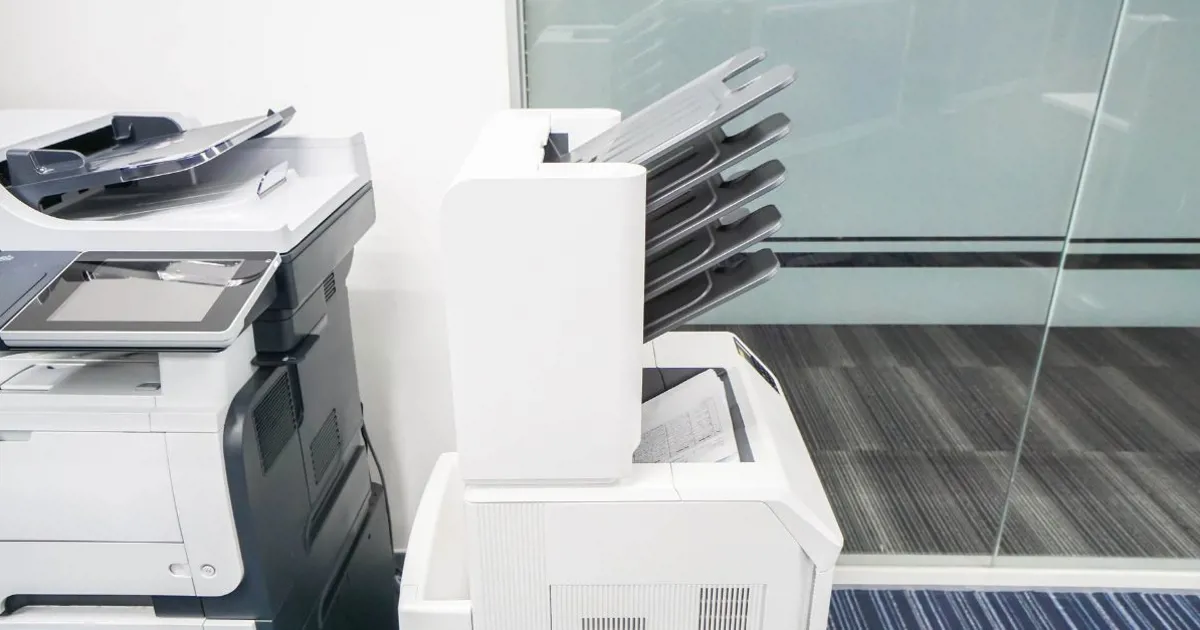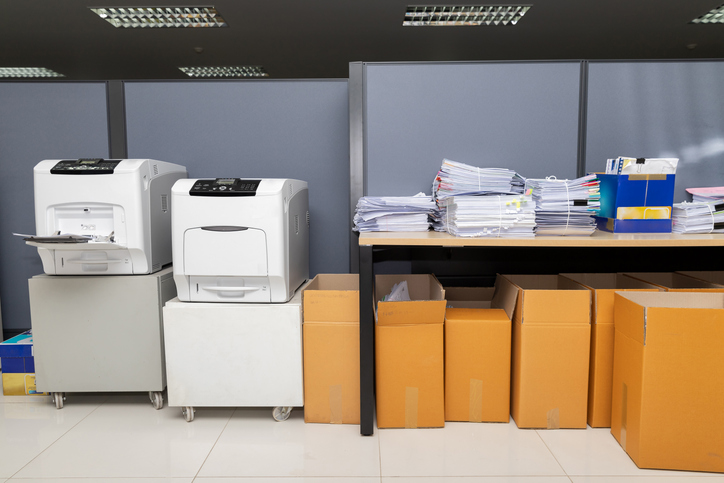Since the COVID pandemic, printer and photocopier strategies for businesses have changed dramatically. Companies have realized they need to print less and transition toward digital solutions. Consequently, previous strategies involving high investment costs in large photocopiers no longer provide financial benefits due to reduced print volumes.
The Old Strategy: Centralized, High-Cost Photocopiers
Historically, businesses invested heavily in large photocopiers, expecting to recoup their investment through lower operating costs and centralized high-volume printing. However, current lower print volumes mean businesses often fail to meet the minimum print requirements of service contracts
When these minimum volumes aren't achieved, businesses must still pay for a predefined quantity of printed pages, even if those pages were not actually printed. Consequently, reducing print volumes does not translate into any financial savings, creating unnecessary expenses without ever achieving the anticipated cost efficiencies.

Right-Sizing the Printer Fleet
Eliminating expensive photocopier leases cannot be effectively executed without first right-sizing the existing printer and multifunction fleets. Offices typically have a combination of leased photocopiers from one manufacturer and smaller desktop printers or multifunction devices from another. These devices often overlap in function.
Fleet Analysis Process
- Evaluate total print volumes across all devices.
- Calculate the total print capacity available within the organization, considering each device's rated monthly volume capacity to accurately assess capacity.
- Determine device utilization rates by comparing actual print volumes to capacity.
Most organizations will find they have significantly underutilized print capacity, indicating an opportunity to eliminate excess equipment, particularly costly leased photocopiers.

-
+ Cost Analysis and Equipment Optimization
The largest office equipment cost typically involves photocopier leases. By evaluating the savings gained from eliminating photocopiers and comparing it to the incremental cost of shifting print volumes to cost-effective desktop printers, businesses usually identify substantial net savings.
-
+ Multifunction Device Integration
When eliminating photocopiers, it's essential to assess the loss of functionality and compensate by upgrading certain printers to multifunction devices. This can be done either immediately or through a strategic repair-and-replace method, redirecting repair budgets toward upgrading to multifunction units
Additionally, upgrading the fleet ensures it remains secure, as outdated printers incapable of firmware updates pose network security risks.
-
+ Total Cost of Ownership (TCO)
Every printer purchase should be carefully assessed using the Total Cost of Ownership calculation.
TCO factors in operating costs, capital expenditure, and anticipated print volumes, ensuring each printer purchase aligns with financial expectations and provides optimal value.
-
+ Eliminating Service Contracts
With photocopier leases eliminated, costly service contracts become unnecessary, especially for desktop printers. The cost of maintaining a service contract compared to the relatively low cost of desktop printers does not make economic sense.
Total repair costs, including replacement versus repairs on an as-needed basis, are significantly less than the comprehensive cost of ongoing service contracts.
Savings generated from eliminating these contracts provide businesses substantial financial flexibility to reinvest in new, more efficient equipment.
-
+ Enhancing Functionality with Scanners
In environments where print needs diminish but scanning demands increase, standalone network scanners offer excellent cost-to-functionality value.
Combining network scanners with existing printers replicates multifunction device functionality, enabling scanning to network folders, emails, or directly to printers elsewhere in the office.
-
+ Efficient Fleet Management
While eliminating photocopiers may result in more printers to manage, it doesn't increase management costs. Effective printer management service providers offer free software solutions that:
- Application requests and review.
- Track printer usage and automatically replenish supplies.
- Clearly indicate which device each delivered supply is intended for, simplifying inventory management and reducing administrative effort.
- Allow batch servicing of multiple printers simultaneously, reducing service costs.
- Provide spare printers for immediate replacement, significantly decreasing technician travel costs and downtime.
By comprehensively adopting this optimized printer and photocopier strategy, businesses achieve significant cost savings, enhanced operational efficiency, improved security, and increased flexibility.






Ready to Optimize Your Photocopier Costs?
Take control of your printer and photocopier fleet today! Contact our Printer Experts for a free, personalized analysis of your print environment. We'll help you eliminate inefficiencies, reduce unnecessary costs, and recommend solutions tailored precisely to your needs—saving you money while enhancing productivity.